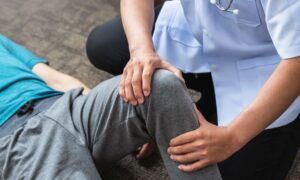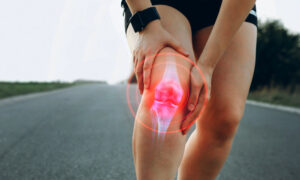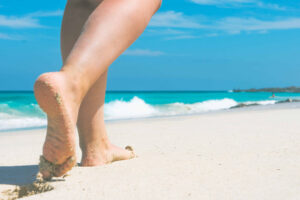Welcome to Dassa Orthopedics! Heel spurs can be a real pain in the …. well – heel, especially as life’s wear and tear starts to catch up. You’re in the right place to learn about this fairly common condition. We aim to equip you with thorough knowledge so you can make educated choices about your orthopedic well-being.
Heel Spurs Demystified: What Are They?
Often mistaken as a sharp growth because of its name, a heel spur is actually a smooth, extra bit of bone on your heel (medically known as calcaneus). This can be particularly noteworthy for older adults, as aging is one factor that can contribute to its development. Keep in mind that bone spurs can show up in various body parts, such as the spine or shoulders—places you might have already noticed some changes as you age.
What Triggers Heel Spurs?
As we age, certain aspects of our bodily health inevitably change. Heel spurs are often the result of ongoing pressure or friction on the feet—something many of us are no stranger to. Aging joints and the thinning of cartilage (yes, osteoarthritis) often encourage the growth of these extra bits of bone.
Lifestyle factors like heavy physical activity, and even choices in footwear, can also bring on heel spurs. If you’ve spent years wearing shoes with poor support, or if you’re carrying extra weight, your risk may be higher.
Recognizing the Telltale Signs
Many people live with bone spurs without even knowing it. But when you do start to feel them, you’ll experience symptoms like pain or swelling, which can become increasingly bothersome with age. The spur can also lead to corns or calluses—additional discomforts you don’t need in your golden years.
The Road to Diagnosis and Healing
An X-ray is the most definitive way to diagnose a heel spur, but generally, this step is only taken if you’re experiencing clear symptoms. As far as treatment goes, the choices are multiple and personalized, often reflecting your lifestyle and overall health status, which can vary widely in your 50s and beyond.
Addressing underlying causes often involves reducing joint stress through weight loss or specific exercises—something many of us are already focusing on for overall health. Physical therapy options like ultrasound or deep tissue massage might be beneficial, particularly for associated conditions such as plantar fasciitis.
For immediate relief, simple solutions like over-the-counter anti-inflammatory meds or supportive shoe inserts can be highly effective and can easily be integrated into your daily routine.
Choose Dassa Orthopedics for Holistic Care
We at Dassa Orthopedics pride ourselves on offering comprehensive and tailored orthopedic advice and treatment options, especially for those of us in the more experienced phases of life. If heel spurs or any other orthopedic concerns are affecting your quality of life, let’s address it together.
For appointments and inquiries:
Bronx | 813 Allerton Ave
929-209-5039
Bronx | 2488 Grand Concourse
929-209-5441
Middletown | 203 Wickham Ave
845-397-9132
*Disclaimer: This guide is aimed at providing general information and should not replace professional medical advice. Consult a qualified healthcare provider for a proper diagnosis and treatment plan tailored to you.*







